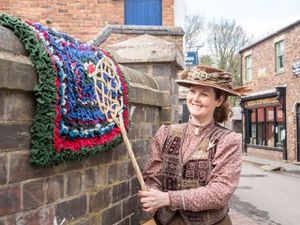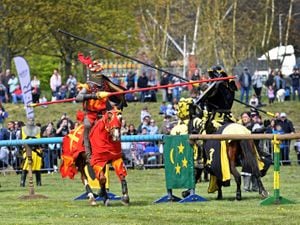Putting the heart back in Hartlebury Castle
Twelve years ago Hartlebury Castle faced an uncertain future when it was put up for sale by its owners, the Church Commissioners for England.
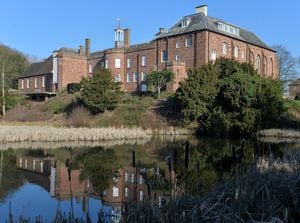
Home to the Bishops of Worcester for more than 1,000 years, the castle was deemed surplus to requirements – sparking fears it could bought by a developer.
But an intensive restoration programme has now led to the castle being hailed a “Hidden Gem” by tourism group Visit England.
The site, incorporating Worcestershire County Museum, opened to the public in May last year, since when visitors have been able to explore rooms such as the Long Gallery, that have never before open to the public before.
They can also wander around the extensive grounds, where new walkways have replaced the tangled nest of overgrown shrubs.
Vicky Bagnall, chairman of Hartlebury Castle Preservation Trust, says she has been delighted by the response the castle has had from visitors.
“It’s immensely satisfying to see and hear people enjoying themselves,” she says. “It’s lovely to be able to show people how the bishops lived and share some of the stories of the different bishops.”
The team, with 110 volunteers among its number, is continuing its work.
There are further plans in place to continue to develop the site, including by restoring the promenade used by Queen Elizabeth I when she visited Bishop Nicholas Bullingham in 1575.
“It’s still a work in progress,” says Vicky, who has also been a garden volunteer for five years. “It’s one thing to open a visitor attraction, it’s quite another to make a success of it.”
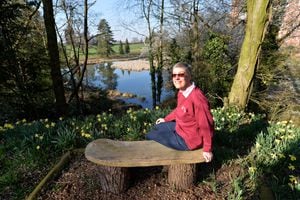
Outside the castle, which was built in the mid-13th century as a fortified manor house, visitors can stroll along the Orchard Terrace and see a 270-year-old mulberry bush discovered by volunteers.
“The area was horribly overgrown but the tree seems to be doing well,” Vicky adds. “It’s nice to know you have a tree that 270-years, we have records the that same tree being planted by Bishop Maddox
“The grounds are a massive restoration job but we think our volunteers have done a fantastic job at making a very good start.”
Amid fears over the potential permanent loss of this important part of Worcestershire’s heritage, the campaign group was formed with the aim of preserving the site.
The trust secured a £5 million Heritage Lottery Fund grant to buy the castle and the surrounding 43 acres of parkland.
It then began restoration work to help turn the grade I listed former bishops’ residence into a major visitor attraction.
Among the rooms that have been opened up to visitors for the first time is the Prince Regent’s bedroom containing custom-made decorative early 19th century pelmets and bed hangings.
The private chamber was created for the Prince of Wales, the future George IV, by Bishop Richard Hurd, who also founded the castle’s renowned Hurd Library, in 1788.
“Unfortunately Bishop Hurd was unwell when he visited and the prince only stayed at the castle for three quarters of an hour,” explains marketing and business development manager, Beth Broadway.
“The bedroom went unslept-in until Prince Charles stayed there in the 1980s.”
As visitors make their way away around the property, also known as the Bishop’s Palace, they are met by talking portraits of Bishop Henry Pepys and his family.
He was Bishop of Worcester from 1841 until 1860, and his daughter Emily kept a diary when she was 10 which provides an insight into what life was like at the castle.
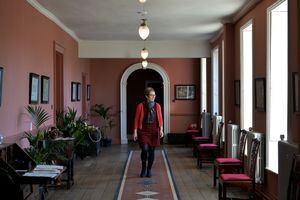
“The one difficulty you have with what’s been a home to Bishops for 1,000 years is how to tell the story of all of the bishops,” explains Vicky.
“With a stately home it tends to stay in one family but here Bishops have changed and moved out, taking their furniture and belongings with them.
“The reason we chose the Pepys family is this diary written in 1844. It tells us so much about who would come to see the Bishop and what it was like to be living here at that time.”
There’s also 1960s-style bedroom to represent what it would have been like when Bishop Mervyn Charles-Edwards called the castle home.
Known as the Dream Room, it includes a stained glass window overlooking the chapel which installed by Bishop Arthur Perowne so that his wife was able to watch services when she was too ill to attend.
The Long Gallery has also been restored after being previously been split into three rooms by Bishop Charles Edwards when he lived in a smaller area of the castle to help cut costs.
“He split into a kitchen, dining room and his study,” Vicky adds. “He realised it was costing quite a lot of money to keep the building going. He also started renting out the Great Hall for events and thinking more commercially.
“What he did bought us a bit of time because the castle might have ended up being sold earlier and what a tragedy it would have been for the local community and county if the castle had been lost.”
The last Bishop to live at Hartlebury was The Right Rev Peter Selby. When he retired in 2007 his successor – the current Bishop of Worcester The Right Rev John Inge – moved into a property beside Worcester Cathedral.
The castle state rooms link up with the museum which contains galleries covering social history, toys through time and archaeology.
There is also the transport gallery which houses a fascinating array of vehicles including a fire engine, hansom cab, bicycles, carts and a large collection of beautifully decorated gipsy caravans, and a Victorian schoolroom, and a new café opened at the historic site last month.



